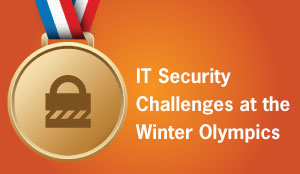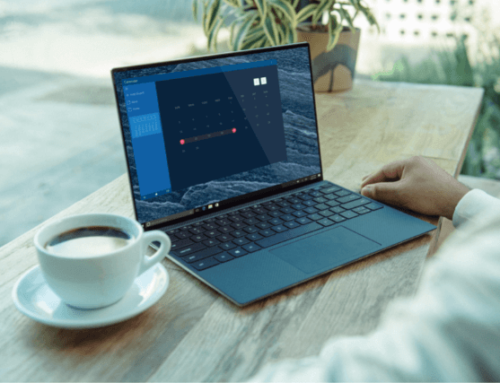The XXII Olympic Winter Games will showcase 90 competitive events in 15 different sports. Athletes from around the world set cultural and political boundaries aside to participate in spirited, patriotic competition. For many, the Games are a symbol of what the world can be when we work in cooperation toward a common goal under the guiding principles of sportsmanship and respect.
It would be naive for anyone to think that such an idealistic symbol would remain untarnished or “off limits” by those who would choose to send a different message. The Olympics have been the target of attacks and terroristic plots in the past, and security measures for the 2014 Games in Sochi are reported to be the most comprehensive in Olympic history. Security guards, gated entrances, and military personnel are all visible protectors, but some of the security protecting the Games can’t be seen—it’s the security of the invaluable IT systems that keep the Games up and running.
[Read more about these systems here.]
One of the IT security challenges the Olympics face is Identity Security and Risk Management. In order to defend its infrastructure from would-be cyber criminals, the Games require high-performance security solutions to monitor the thousands of security events that take place every day. The Olympics also require applications that verify identity and accreditation to ensure only authorized volunteers and personnel are granted access to secure areas. Thousands of hours are spent testing and rehearsing for the most unthinkable security threats to the IT infrastructure. Application Delivery Controllers loaded with security software, such as F5’s Big-IP Application Security Manager and Big-IP Access Policy Manager, would be ideal technology platforms to build into a secure infrastructure. The underlying architecture of Big-IP devices allows for redundant system configuration—an absolute must in any secure infrastructure.
In the case of the Olympics, limiting access to the infrastructure and network must not prevent journalists and members of the media from accessing information crucial to their reporting and dissemination of results to fans around the world. But when thousands of reporters try to access information from the network, all from their own personal devices, security vulnerabilities are exposed. That’s why the solutions specialists tasked with securing the systems behind the Olympic Games implemented a BYOD strategy. By building a secure intranet accessible only to those with the proper credentials, valuable and sensitive information remains on the secure infrastructure and is not downloaded or kept on personal devices.
Security is set to play its biggest role yet at the Olympics this year, and that includes IT security. With the rapid advancements in technology, the speed at which information is disseminated, and the sheer number of users connected to the robust infrastructure, the margin for error for IT personnel at the Olympics is slim. Securing the infrastructure means securing the Games—and securing the symbol for what the world can achieve through sport.
Sources:
http://atos.net/en-us/home/olympic-games/business-challenges.html












